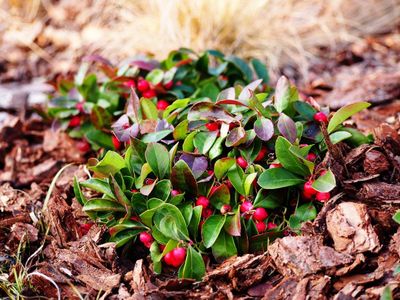Growing Wintergreen Plants
Any area of the garden that is shady to partially sunny make ideal wintergreen growing conditions. These low growing plants form creeping mats of glossy green foliage that turns red to bronze in winter. The decorative red berries are an added bonus that were used in candies, gum, perfume, cosmetics, teas, and other uses prior to synthetic flavorings. Wintergreen (Gaultheria procumbens) is a forest plant in its native habitat. It primarily colonizes areas around natives like mountain laurel and rhododendrons in moist, acidic soils. Much of its wild range is west of the Mississippi River, but it is also found south to Georgia. As understory plants, a low light area is best suited for growing wintergreen plants. The species name, procumbens, proclaims this as a groundcover because it means “lying flat.” Optimal wintergreen growing conditions are found in United States Department of Agriculture zones 3 to 8 or AHS heat zones 8 to 1. Wintergreen plants perform best in light to full shade in areas with cool summers. The plants do not enjoy hot, humid conditions, suffer in drought, and dislike overly wet, boggy soils.
How to Care for Wintergreen
This is an easy little plant to grow provided it is situated in a suitable location. Plants grow slowly and should be spaced 4 to 6 inches (10-15 cm.) apart. When plants are newly installed, wintergreen plant care should include regular watering and even established, mature plants require supplemental moisture in hot, dry summers. No pruning or mowing is required with this plant. It also has few pest or disease issues, partly due to the pungent oils the crushed leaves and berries emit. The only concern of issue is cosmetic, where rust can discolor the leaves. In summer, pale bell-shaped flowers appear and lead to deep red drupes. The berries may persist well into the winter if birds do not eat them or if you aren’t tempted to try your hand at a sauce or canned preparation.
Wintergreen Plant Propagation
As with most berries, these plants can be propagated with their seeds. In fact, in ideal conditions, the plants may self-sow. The seeds need to be separated from the pulp and given 4 to 13 weeks cold treatment. Plant seeds in flats filled with peat and sand in early spring. Place flats in a greenhouse or cold frame until sprouts are noticed. Seeds should sprout in one to two months, but plants are slow to grow. A faster method of wintergreen plant propagation is through division. Divide plants in early spring. After planting divisions, provide average water as part of essential wintergreen plant care, unless the spring rain is consistent. Wintergreen can also be propagated by semi-ripe stem cuttings with a little rooting hormone and a low soil medium.
